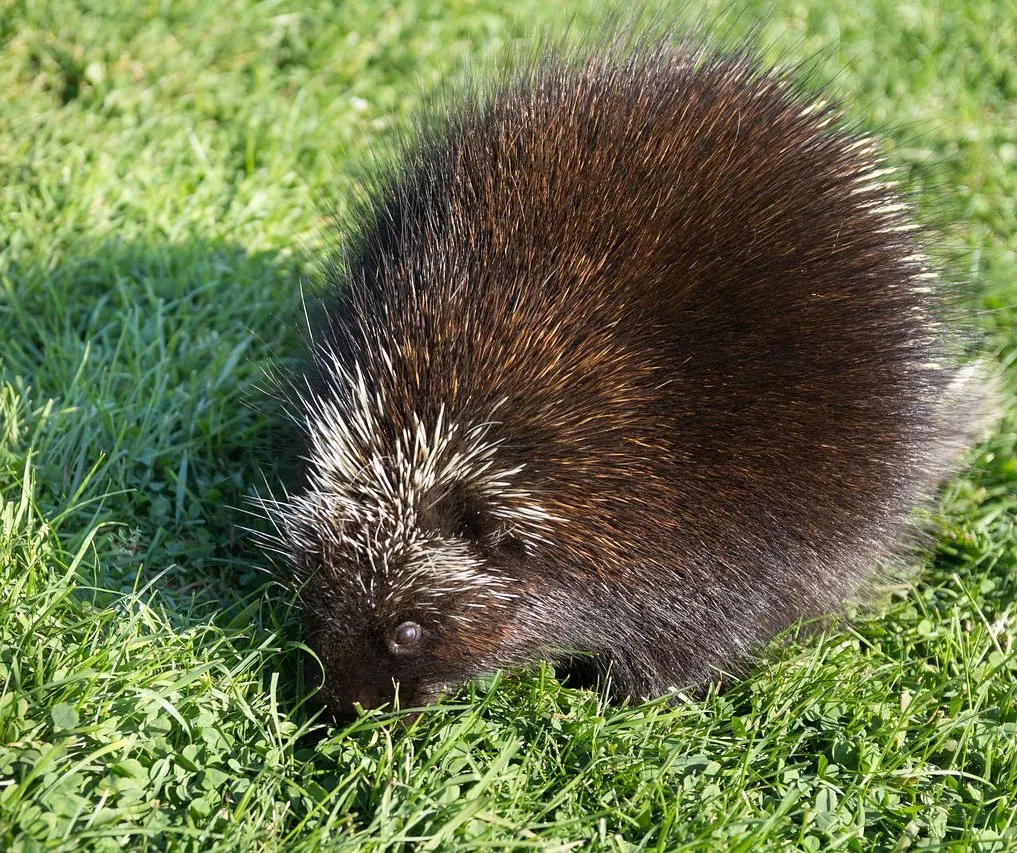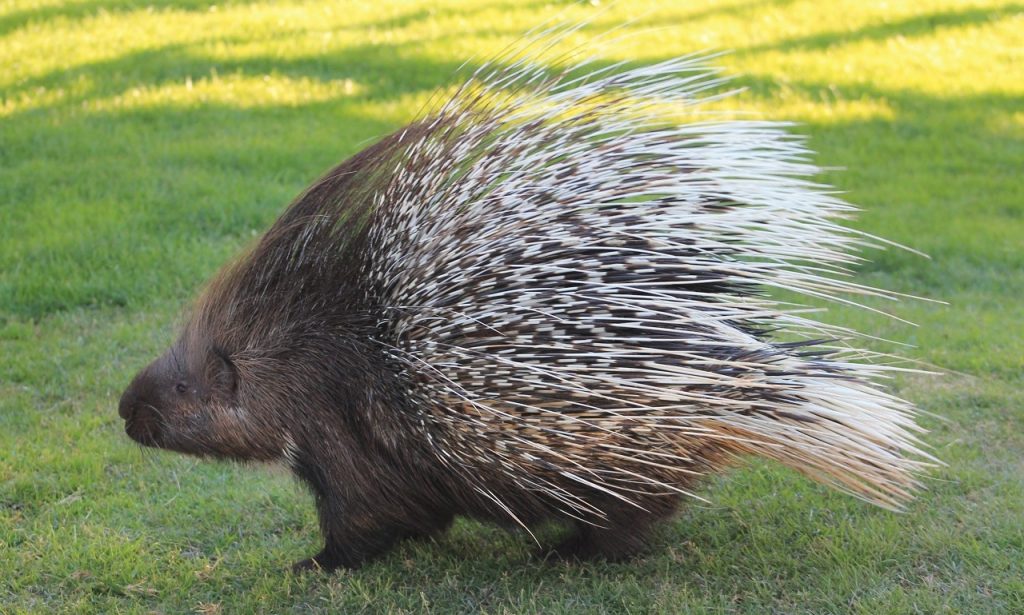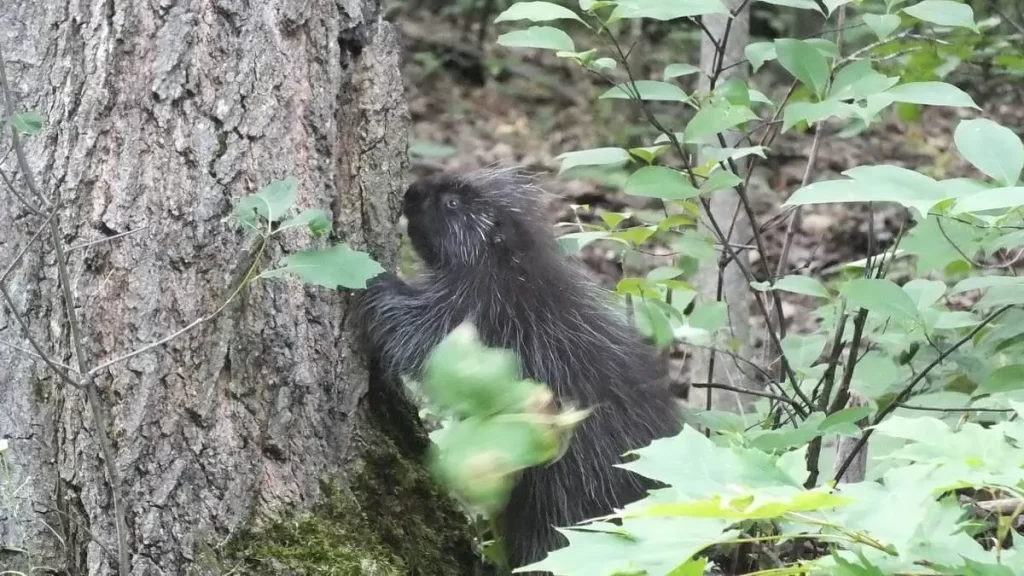Porcupines and hedgehogs are two distinct species of small mammals that belong to different families and have several notable differences in their physical characteristics, behavior, and habitat. While they both possess sharp spines for protection, these animals have distinct features and adaptations that set them apart. In this detailed description, we will explore the differences between porcupines and hedgehogs in terms of their taxonomy, physical features, spines, behavior, diet, habitat, and reproduction.

Taxonomy: Porcupines belong to the family Erethizontidae, which consists of several species, including the North American porcupine and the African crested porcupine. Hedgehogs, on the other hand, belong to the family Erinaceidae, which includes species like the European hedgehog and the African pygmy hedgehog. These taxonomic classifications place these animals in different families and highlight their evolutionary divergence.
Physical Features: Porcupines and hedgehogs exhibit distinct physical features. Porcupines are larger and heavier, ranging from 60 to 100 centimeters in length, excluding their tails, and can weigh up to 30 kilograms. They have stocky bodies, short legs, and a robust build. Porcupines are known for their quills, which are modified hairs that cover their bodies. These quills are sharp and barbed, making them an effective defense mechanism against predators.
Hedgehogs, on the other hand, are smaller and more compact. They measure around 15 to 30 centimeters in length, excluding their tails, and typically weigh between 300 to 1500 grams, depending on the species. Hedgehogs have a round body shape with short legs, and their bodies are covered in spines. Unlike porcupine quills, these spines are not barbed and are, therefore, not easily detached from their bodies.
Spines: One of the most distinctive features of both porcupines and hedgehogs is their spines. Porcupines have long, sharp quills that can measure up to 30 centimeters in length. These quills are coated with a layer of keratin and are modified hairs that serve as a defense mechanism against predators. When threatened, a porcupine will raise its quills, making itself appear larger and more dangerous. If attacked, the porcupine can release its quills into the predator’s skin, causing pain, irritation, and, in some cases, infection.
Hedgehogs, on the other hand, have shorter spines called “bristles.” These spines are also made of keratin and cover the hedgehog’s body. Unlike porcupines, hedgehogs cannot release their spines, but they can roll themselves into a tight ball, exposing only their spines as a protective measure. This unique adaptation makes it difficult for predators to attack them. However, hedgehogs do not actively shoot their spines at predators like porcupines.
Behavior: Porcupines and hedgehogs differ in their behavior as well. Porcupines are nocturnal animals, mostly active during the night. They are excellent climbers and spend much of their time in trees, feeding on bark, leaves, and other vegetation. Porcupines are generally solitary animals, except during the breeding season when they come together to mate.
Hedgehogs, on the other hand, are primarily nocturnal but can also be active during the day, depending on the species. They are ground-dwelling animals and are skilled at burrowing. Hedgehogs are known for their characteristic foraging behavior, using their snouts and sharp teeth to search for food, which mainly consists of insects, worms, small vertebrates, and vegetation.

Diet: Porcupines have a primarily herbivorous diet, feeding on a wide variety of plant matter such as leaves, twigs, bark, and fruits. They have strong jaws and teeth that allow them to gnaw through tough vegetation. Porcupines are important for the ecosystem as they help control plant growth and contribute to seed dispersal through their droppings.
Hedgehogs, on the other hand, are insectivores, with insects forming a significant portion of their diet. They feed on a variety of invertebrates, including beetles, worms, snails, and spiders. In addition to insects, hedgehogs also consume small vertebrates like frogs, mice, and even snakes. Some hedgehog species may also incorporate fruits and vegetation into their diet.
Habitat: Porcupines and hedgehogs occupy different habitats. Porcupines are found in various regions, including North America, South America, Africa, Europe, and Asia. They inhabit diverse environments such as forests, woodlands, deserts, and grasslands. Porcupines are adaptable animals and can survive in different climatic conditions.
Hedgehogs, on the other hand, are primarily found in Europe, Asia, and Africa. They inhabit a range of environments, including woodlands, grasslands, gardens, and even urban areas. Hedgehogs are well adapted to different climatic conditions and can be found in temperate, Mediterranean, and tropical regions.
Reproduction: Porcupines and hedgehogs also differ in their reproductive behaviors. Porcupines have a longer gestation period, lasting around 200 days. They typically give birth to a single offspring, known as a porcupette, although twins are not uncommon. Porcupettes are born with soft quills that harden within a few hours after birth. They are relatively independent at a young age and can climb and feed on their own within a few weeks.
Hedgehogs, on the other hand, have a shorter gestation period lasting around 35 to 58 days, depending on the species. Female hedgehogs give birth to a litter of usually four to six hoglets, although larger litters can occur. Hoglets are born blind and hairless, relying entirely on their mother for warmth and nutrition. They develop their spines within a few days and are weaned at around four to six weeks old.
Protection and Predators: Both porcupines and hedgehogs rely on their spines for protection against predators. When threatened, porcupines will raise and fan their quills to make themselves appear larger and more intimidating. If a predator gets too close, the porcupine can lash out with its tail, embedding quills into the attacker’s skin. The barbs on the quills make them difficult to remove, causing pain and potential infection.
Hedgehogs, on the other hand, have a unique defensive behavior known as “balling up.” When threatened, hedgehogs will curl their bodies into a tight ball, with their spines facing outward. This posture protects their vulnerable body parts, while the spines form a barrier against predators. Most predators, including large birds, mammals, and reptiles, find it challenging to break through this defensive posture.

In summary, although both porcupines and hedgehogs possess spines for protection, they belong to different families and have distinct characteristics. Porcupines are larger, heavier, and primarily herbivorous, with long, barbed quills. They are nocturnal and inhabit various habitats across the globe. Hedgehogs, on the other hand, are smaller, insectivorous mammals with shorter spines. They exhibit unique defensive behavior by rolling into a ball when threatened. Hedgehogs are also primarily nocturnal but may be active during the day. They inhabit diverse environments and have specific dietary preferences. Understanding these differences helps us appreciate the incredible diversity of the animal kingdom and the unique adaptations each species has developed for its survival.